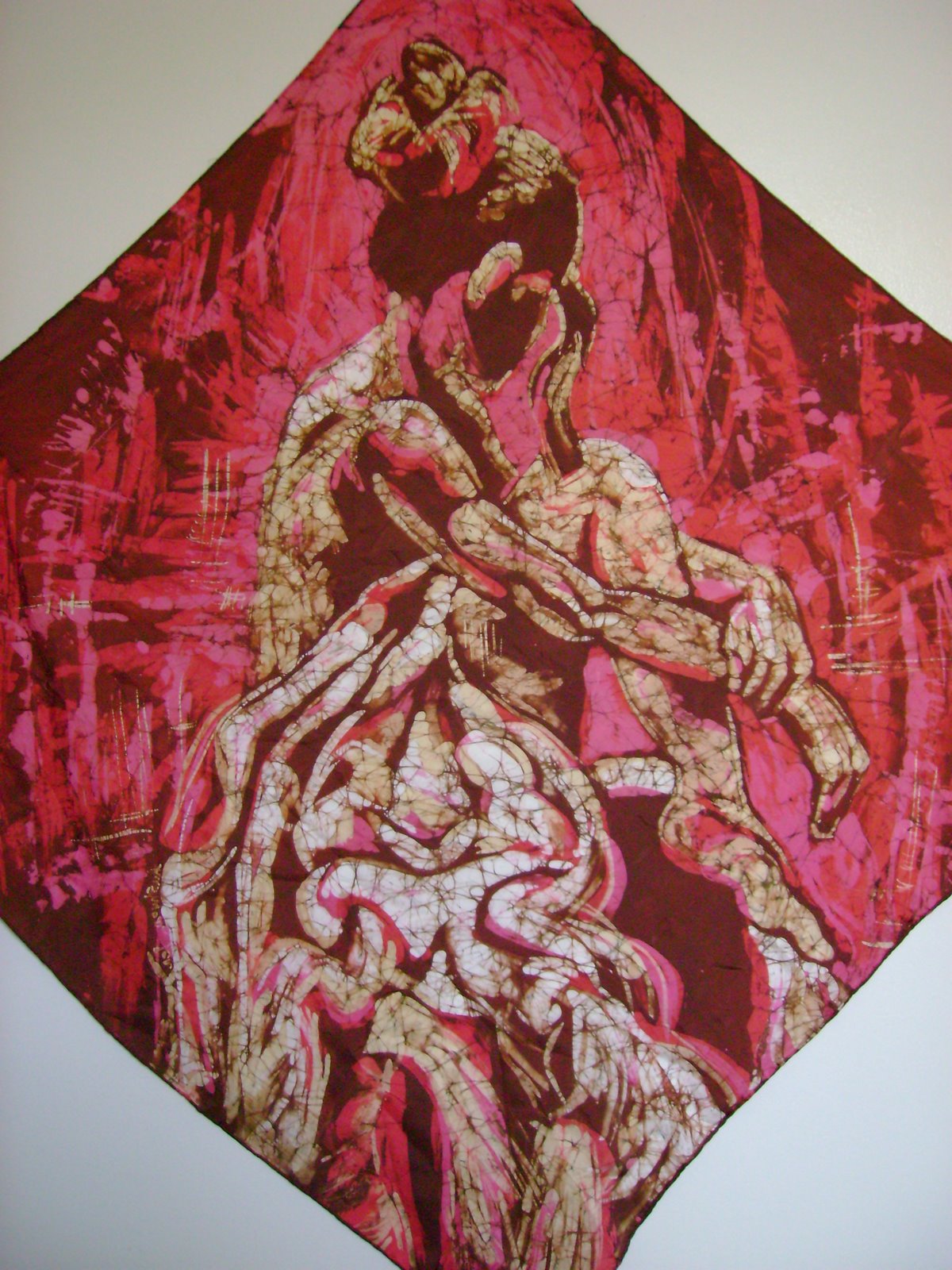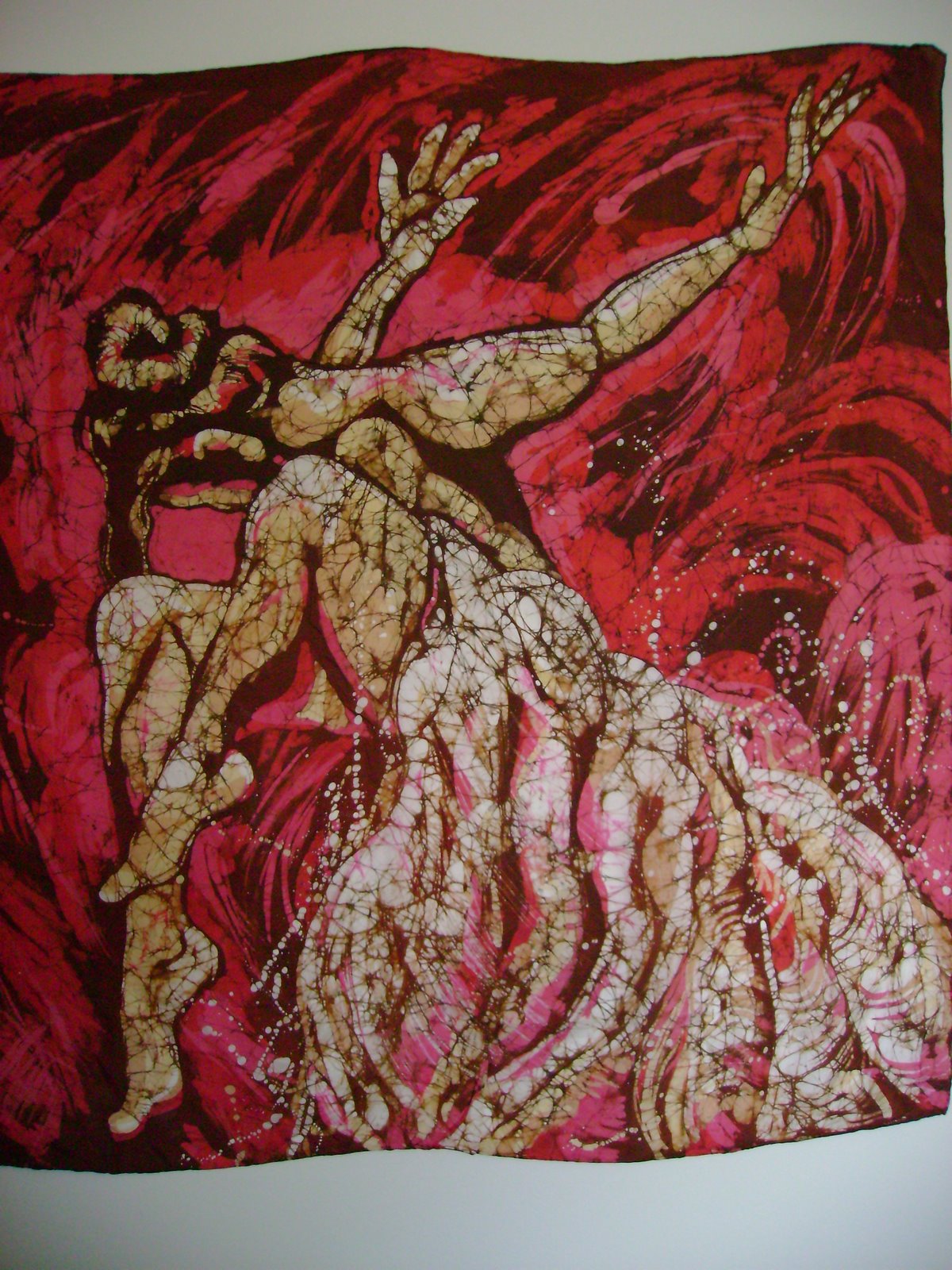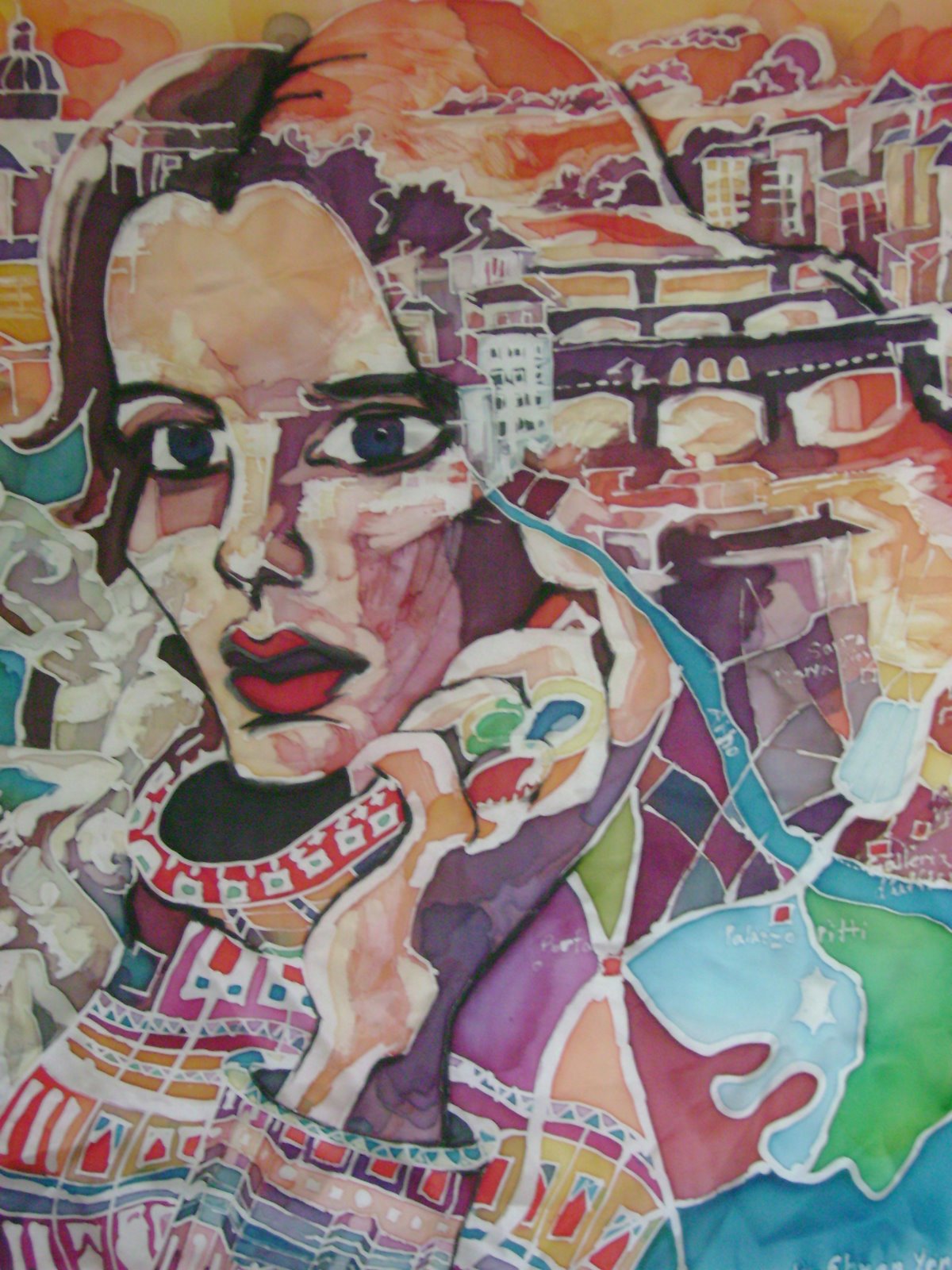
I was and still am left speechless by the stunning landscape and the complex and elaborate culture of the Dogon people. There honestly are no words to do this place justice – you simply MUST see this world for yourself. It is worth every penny and all of the many drops of sweat lost.

The Dogon take great pride in their gala (indigo) and bogolan fabric which incorporate the many symbols and designs of their culture. Most ubiquitous is the “Chiwara” an antelope that represents agricultural prowess and the “Dogon” sign of two contrasting U’s for the earth/sky and a bar in the center for the Dogon people.

Unlike in the big cities, no chemicals are involved in the traditional method and only recently have artisans begun to create “modern paintings’ using a bleach solution to make white.
In Dogon, the ‘ngalama’ leaves which make the yellow dye is called ‘akashia’ and instead of dying the entire fabric with it, it is instead mixed with indigo and drawn only onto the places where the clay will be applied and then drawn again on top of the clay.

The layers of clay and dye are repeated as often as necessary to make a deep permanent black. A drawing in the negative with bleach to remove color is thus never utilized.
The difference is obvious in the softer colors and more organic lines of the natural bogolan . If there is still any doubt just look on the back to make sure it is white and not pre-dyed.
The bark of the ‘local wine tree’ is used to color the fabric reddish-brown and it’s berries can be eaten or made into juice. Delicious!

Even the indigo is made only with the ashes of millet stalks. I can’t help but wonder how this is possible then the usual process requires both causic soda and hydrosulfite to make the blue truly colorfast. Maybe the Dogon really do have some sort of ancient magic!















 I just spent an incredible week in the city of Segou with
I just spent an incredible week in the city of Segou with  It is in this beautiful and creative environment that I learned how to make my own pieces of art out of cotton, clay, and all natural dyes.
It is in this beautiful and creative environment that I learned how to make my own pieces of art out of cotton, clay, and all natural dyes. Boubacar Doumbia, the founder of the group; introduced me to the origins, process and many symbols of this medium.
Boubacar Doumbia, the founder of the group; introduced me to the origins, process and many symbols of this medium.  It starts with Basilanfini, a fabric dyed from the leaves of the “ngalama” plant (yellow) and the bark of the “npeku” tree (red). Both contain a chemical called tannin which has been used as medicine and an antiseptic by the Bamara tribe of Mali for centuries. “Basilanfini” thus translates to “medicine cloth” and has been worn traditionally by Malians for protection and healing.
It starts with Basilanfini, a fabric dyed from the leaves of the “ngalama” plant (yellow) and the bark of the “npeku” tree (red). Both contain a chemical called tannin which has been used as medicine and an antiseptic by the Bamara tribe of Mali for centuries. “Basilanfini” thus translates to “medicine cloth” and has been worn traditionally by Malians for protection and healing.  Legend has it that a hunter wearing basilanfini carried home an animal covered in clay which reacted with the tannin in the fabric to stain it a permenant black. That is how “Bogolanfini” or “clay cloth” was born.
Legend has it that a hunter wearing basilanfini carried home an animal covered in clay which reacted with the tannin in the fabric to stain it a permenant black. That is how “Bogolanfini” or “clay cloth” was born.  The process is long and involves first dying the fabric multiple times to make basilanfini, then painting on the clay before applying multiple layers of a bleachlike substance and natural dyes to produce a finished work.
The process is long and involves first dying the fabric multiple times to make basilanfini, then painting on the clay before applying multiple layers of a bleachlike substance and natural dyes to produce a finished work. I can’t believe I managed to make 7 pieces of bogolanfini in 7 days! Here they are drying in the sun.
I can’t believe I managed to make 7 pieces of bogolanfini in 7 days! Here they are drying in the sun. I seriously LOVE this technique which uses the colors and materials of the earth. Why has no one combined bogolan with batik? The dyes are used cold and would be the perfect solution to the problem of using natural dyes with wax!
I seriously LOVE this technique which uses the colors and materials of the earth. Why has no one combined bogolan with batik? The dyes are used cold and would be the perfect solution to the problem of using natural dyes with wax!
 Bogolan is a way of creating designs on fabric using clay (not mud!) and an integral part of Malian culture.
Bogolan is a way of creating designs on fabric using clay (not mud!) and an integral part of Malian culture.
 I love the neutral tones of this fabric and the absence of chemicals used in making them. For how proud the Malians are of their national fabric however, I am surprised by the few locals I see wearing it in contrast to the ubiquitous batik, tie-dye or British wax prints everywhere I look. In this hot, brown land, I can see the appeal of the brighter and more colorful clothing which looks so wonderful on their dark skin. Personally however, I love the earth tones of Bogolan more!
I love the neutral tones of this fabric and the absence of chemicals used in making them. For how proud the Malians are of their national fabric however, I am surprised by the few locals I see wearing it in contrast to the ubiquitous batik, tie-dye or British wax prints everywhere I look. In this hot, brown land, I can see the appeal of the brighter and more colorful clothing which looks so wonderful on their dark skin. Personally however, I love the earth tones of Bogolan more!
 Like the rest of West Africa, batik in Mali is created in conjunction with tie-dye. The strict family connections don’t seem to exist here however and I was surprised by the huge groups of unrelated men and boys working together on various forms of patterning fabric, including sewing, tying, binding and stamping. Anyone is welcome to join them to learn the craft and I saw many young boys taking advantage of the free education.
Like the rest of West Africa, batik in Mali is created in conjunction with tie-dye. The strict family connections don’t seem to exist here however and I was surprised by the huge groups of unrelated men and boys working together on various forms of patterning fabric, including sewing, tying, binding and stamping. Anyone is welcome to join them to learn the craft and I saw many young boys taking advantage of the free education.  Unlike Senegal or Gambia where both men and women can work from start to finish (although it is almost always men); in Mali, all of the designing work is restricted to men while the dying is reserved for the women. This is such a contrast to Indonesia where the opposite it true!
Unlike Senegal or Gambia where both men and women can work from start to finish (although it is almost always men); in Mali, all of the designing work is restricted to men while the dying is reserved for the women. This is such a contrast to Indonesia where the opposite it true!  Instead of helping with the men who are behind, these women are sitting around waiting for the men to finish sewing and stamping in order to do their part of the work.
Instead of helping with the men who are behind, these women are sitting around waiting for the men to finish sewing and stamping in order to do their part of the work. 





